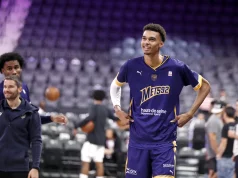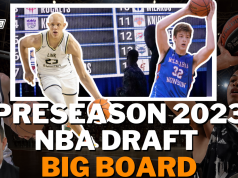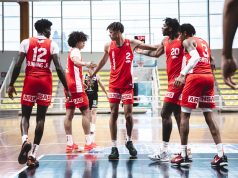After the trade centered around DeMar DeRozan and Kawhi Leonard was completed Wednesday, I kept seeing two common questions from Spurs fans on Twitter.
How much cap space will the Spurs have next season?
On paper, the Spurs aren’t projected to have any cap space next summer with the cap holds of Rudy Gay, Manu Ginobili, Dante Cunningham, and Nikola Milutinov. Like this summer, San Antonio would have access to the non-tax payer mid-level exception of $9.2 million and the bi-annual exception of $3.6 million.
If all those players cap holds were renounced, the Spurs would still be around $2.2 million over the salary cap. To get real cap space, players would need to be waived or traded.
If the Spurs were to trade Pau Gasol without taking any salary back and renounce all cap holds, they would open around $12.8 million in cap space. If they were to waive Gasol’s non-guaranteed $16 million next summer and stretch the guaranteed $6.7 million he’s owed, they’d still only have access to the non-tax mid-level exception and bi-annual exception.
If the Spurs were to trade Gasol and Patty Mills without taking any salary back, they could open approximately $24.3 million in cap space next summer.
In order for the Spurs to open a maximum salary slot for a free agent with 10 years or more of experience, the Spurs would need to trade Gasol, Mills, Davis Bertans, Marco Belinelli, Bryn Forbes, and their 2019 first round pick. Doing this would open around $39 million in salary cap space with a team that still had DeRozan, LaMarcus Aldridge, Poeltl, Lonnie Walker IV, Derrick White, and Dejounte Murray.
All these salary projections are based on the estimation Bryn Forbes signed his deal for around $2.5 million per season and with estimations for Belinelli and Cunningham.
Will the Spurs trade Patty Mills or Pau Gasol this season?
Since Mills still has two guaranteed years on his deal after this coming season, it seems very unlikely he would be traded. However, with Gasol, his contract is interesting and makes for a valuable trade chip.
Gasol will earn $16.8 million this season and he has a non-guaranteed deal for $16 million next season. Next summer, if he’s not waived by July 1, his salary for the 2019-20 season jumps from $6.7 million guaranteed to $16 million.
This means that if the Spurs have the intention of waiving Gasol before July 1 next summer, his contract can basically be viewed as an expiring deal this season.
There’s three routes the Spurs could target with Gasol’s contract – make a deal now, wait until the middle of the season, or wait until the season ends.
Make a deal now
The Spurs could use Gasol’s $16.8 million this season to trade for a player that a team is trying to move. To find players in this market, you have to look at the teams who will likely be tanking to get a good draft pick.
A player like Kent Bazemore fits this category. The Hawks have been reportedly trying to find a trade suitor to take on his $18 million salary for this season and $19.2 million player option salary for next season. The math works with a Gasol for Bazemore swap, and the Spurs would likely need to attach a future second round pick in the deal.
For the Hawks, they could either keep Gasol all season and then waive him before July 1 to only have the $6.7 million cap hit, or they could work on a buyout so he could join another playoff team. Atlanta will have received a pick and will have unloaded Bazemore’s deal in the process.
For the Spurs, the question would be how do they view Bazemore right now. When Bazemore was a free agent, Bazemore confirmed to me the Spurs were one of the teams who reached out to him. Years later, how do the Spurs view him and would they want his $19.2 million on the books for next season if he opts into his deal?
Wait until the middle of the season
By around mid-January, it starts to become obvious which teams are in the playoff race and which teams would benefit from tanking to end their season. That’s when the Spurs could look at trades with those teams that initially wanted to compete, but now are more focused on developing young players for a better draft pick.
A few players from this group hypothetically could be DeMarre Carroll of Brooklyn, George Hill of Cleveland, Wesley Matthews of Dallas, Nikola Vucevic of Orlando, or Trevor Ariza of Phoenix. Again, these are teams that initially want to compete, but if for some reason they suffered too many losses from the start of the season to mid-January and they know they’re likely out of the playoff race, they could possibly look to add Gasol with a second round pick instead of losing these players for nothing when they’re all unrestricted free agents next summer.
Wait until the end of the season
Once the Spurs’ season officially ends either because they didn’t make the playoffs or when their playoff runs ends, they’d have a limited window to trade Gasol’s $16.8 million before July 1. With Sacramento currently being the only team with enough cap space to absorb that kind of contract right now, that type of trade looks quite difficult to complete now.
If the Spurs can’t find a trade partner at the end of the season, they’d have two choices left – waive Gasol before July 1 and take on either the $6.7 million cap hit next summer or stretch it out to $2.2 million for the next three years. Or, keep him on the roster for next season by letting his full $16 million guarantee.
By the time the trade deadline passes in mid-February, this current Spurs roster might look different if Gasol were moved either now or in the middle of the season. Only time will tell.






